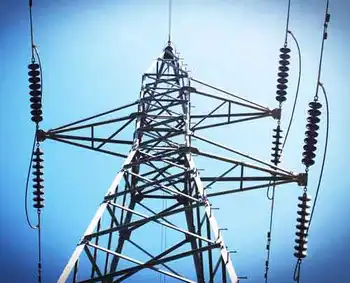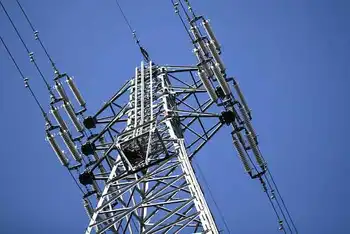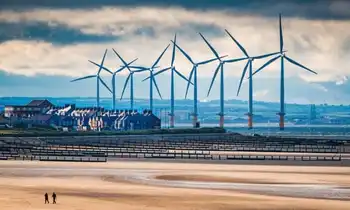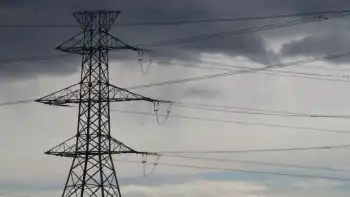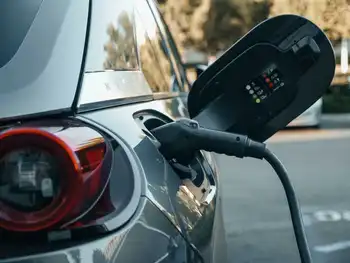Eco-friendly light bulbs flip switch on problems
By Washington Times
NFPA 70e Training - Arc Flash
Our customized live online or in‑person group training can be delivered to your staff at your location.

- Live Online
- 6 hours Instructor-led
- Group Training Available
The federal government plans to require consumers over the next several years to replace incandescent light bulbs with more expensive but more energy-efficient and longer-lasting compact fluorescent bulbs (CFLs).
But improper disposal of the mercury-powered bulbs poses an environmental hazard, and the federal government has given little guidance to consumers. The outlets for safe disposal are few and haphazard, and history suggests that compliance will be spotty.
"The problem to the environment comes when millions get disposed of and the cumulative effect becomes problematic. That is when the [Environmental Protection Agency] gets concerned," said Neal Langerman, a former chairman of the American Chemical Society Division of Chemical Health and Safety. "If you have a municipal urban landfill and have a population of 450,000 households disposing of one or two CFLs a year - you do the arithmetic. Put one-half milligram of mercury per bulb, it amounts to a significant loading, and mercury does migrate into groundwater."
Although California has banned CFLs from trash since 2006, local governments there estimate that less than 10 percent of CFLs receive proper disposal and recycling, said San Francisco's KGO-TV.
Revised standards for home appliances and lighting under the December 2007 energy bill require incandescent light bulbs - the basic model that has been used for 130 years - to be phased out in order to achieve about 25 percent greater efficiency for bulbs by 2014 and about 200 percent greater efficiency by 2020.
Without organized programs to educate consumers on safe handling and disposal of used or broken bulbs, landfills are likely to become even more polluted, Mr. Langerman told The Washington Times.
"The appropriate thing for us as a nation is not to dispose but have an aggressive take-back program," said Mr. Langerman, who advocates a profit incentive for recycling, a system where "if you go out of your way [to safely dispose or recycle the bulbs] you get some money back. People will do this if made convenient."
The federal Web site Energy Star (www.energystar.gov) notes that each CFL bulb contains an average of 4 milligrams of mercury, compared with the 500 milligrams contained in old-style glass thermometers. None of the mercury is released in operation, and leakage is a risk only if the bulbs are broken.
The site says "electricity use is the main source of mercury emissions in the U.S.," so it's important that CFLs use less electricity than incandescent lights. The EPA says that "a 13-watt, 8,000-rated-hour-life CFL (60-watt equivalent; a common light bulb type)" will save enough energy over its lifetime to offset even all of its mercury leakage into landfills.
EPA spokeswoman Tisha Petteway wrote in an e-mail: "Once a CFL or a fluorescent lamp is at the end of its life, EPA strongly encourages Americans to recycle it."
The CFLs sold at supermarkets and drugstores have small warnings that the bulbs contain mercury. A 13-watt model from General Electric Co. does not elaborate on the risks beyond telling consumers to "manage in accord with disposal laws." The packaging refers buyers to a recycling information Web site (www.lamprecycle.org) and provides a toll-free phone number.
Breaking a thermometer "can raise mercury levels in a tight bedroom to high enough levels to cause symptoms in a child in a short amount of time," Mr. Langerman said. "The biggest difference is the amount of ventilation."
No federal mandate requires households to recycle or safely dispose of such bulbs. The massive energy bill in Congress offers no guidance on the question of disposal, and the subject has generated little discussion during debate. That leaves this issue subject to a hodgepodge of state and local rules, some more serious than others about regulation.
The EPA gives consumers advice about finding safe disposal and recycling facilities across the country on its Web site www.epa.gov/waste/hazard/wastetypes/universal/lamps/live.htm.
D.C. residents, for example, are directed to trash transfer stations in Northeast. Contractors accept items for recycling from those with proof of local residency or from vehicles with D.C. license plates.
The two D.C. stations take recyclables only on Saturdays from 8 a.m. to 3 p.m. A total of "620 unit pounds" of CFL bulbs and mercury lamps were dropped off in an eight-month period since collection was made available last year, said Nancy Lyons, a spokeswoman for the D.C. Department of Public Works.
Home Depot, Ace Hardware, Ikea and other retailers collect the bulbs for recycling as a customer service.
Chris Jensen, the employee in charge of lighting supplies at Frager's Hardware on Capitol Hill, said the store considered offering a disposal center but found that it would cost "one grand a month."
The store advises customers to go to Prudential Carruthers Realtors sales office at 216 Seventh St. SE, where bulbs can be dropped off for recycling in a cardboard box with a heavy plastic liner.
Prudential manager Larry Kamins said the office periodically buys the package for $95 from a professional recycling company he found on the Internet. He said he decided to offer the community service because, when he started using the bulbs, he couldn't find any information on recycling locations.
"They certainly don't go out of their way" for this, Mr. Kamins said.
He said people often drop off bulbs on his doorstep overnight and that a Capitol Hill resident voluntarily collects used bulbs from neighbors and brings them to Prudential.
Mark Kohorst, senior manager for environment, health and safety at the Rosslyn-based National Electrical Manufacturers Association, said federal business regulations classify mercury-containing lamps as a subcategory of hazardous waste.
"A nationwide network of recyclers exists to serve that sector," he said.
The rule exempts households but gives states the right to adopt the federal law and apply it to households, thereby making it illegal for anyone to dispose of the bulbs in any way other than recycling.
Mr. Kohorst said Maine has enacted "the first law of its kind requiring manufacturers to fund recycling," forcing the development and implementation of state-approved programs by January. Manufacturers that do no comply will not be allowed to sell the lamps in Maine.
"We do need a national program because what good does it do for California to ban it" when neighboring states don't, said Leonard Robinson, chief deputy director of California's Department of Toxic Substances Control.
He plans to address the subject when he visits Washington with Energy Secretary Steven Chu, "a Californian," he said, who "knows the situation."
A pilot project in Humboldt County in Northern California allows households to mail used bulbs directly to a recycler, he said.
With the cooperation of the U.S. Postal Service and funding provided by Pacific Gas & Electric Co., about 58,000 residences have used direct shipment since February, he said. "That takes care of the rural people, because not everybody has a Wal-Mart or Ikea nearby."
New compact fluorescent light bulbs that carry the "Energy Star Qualified" label are supposed to last up to 10 times longer than incandescent bulbs and use one-quarter of the energy to produce the same amount of light. Although the CFLs numbers are higher, the bulbs save money because they last longer.
Mr. Jensen noted, however, that most CFLs on the market don't work with motion sensors or "dusk to dawn" fixtures, "and many models warn they are 'not for use with dimmers.'"
Lane Burt, an energy policy analyst with the Natural Resources Defense Council's Washington office, said CFL bulbs are just "a stopover" before an even more efficient type of light bulb arrives.
"Everyone should know where we want to go is LEDs [light-emitting diodes]. They are much more efficient and costs are coming down quickly. They have improved tenfold in the past decade."





